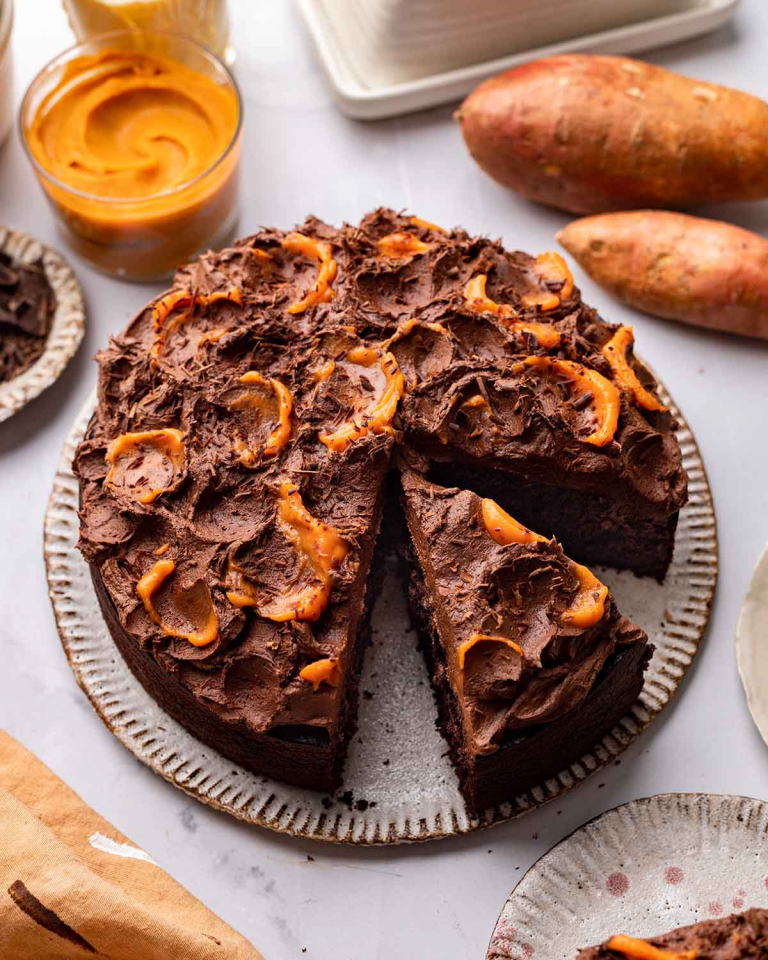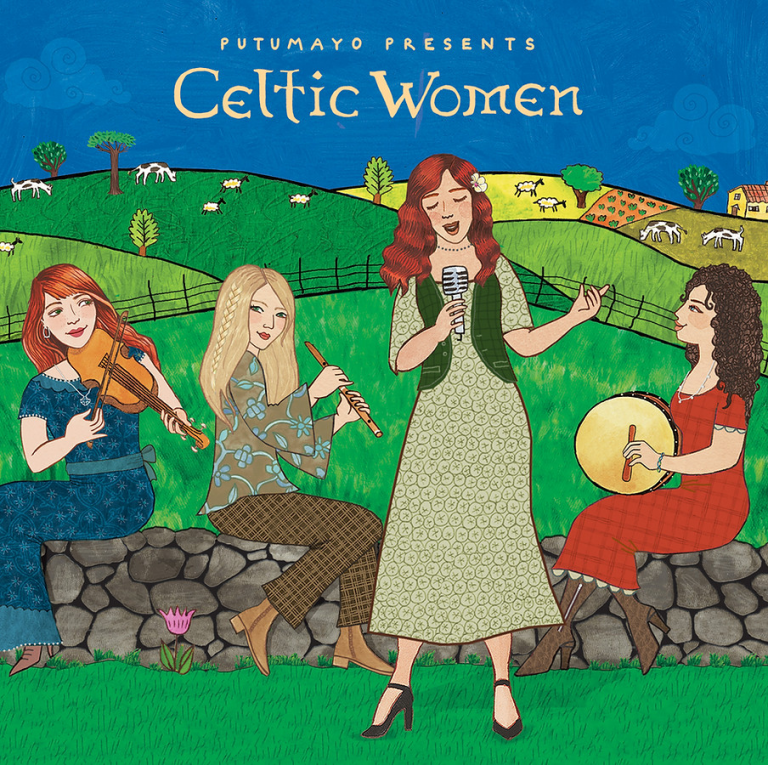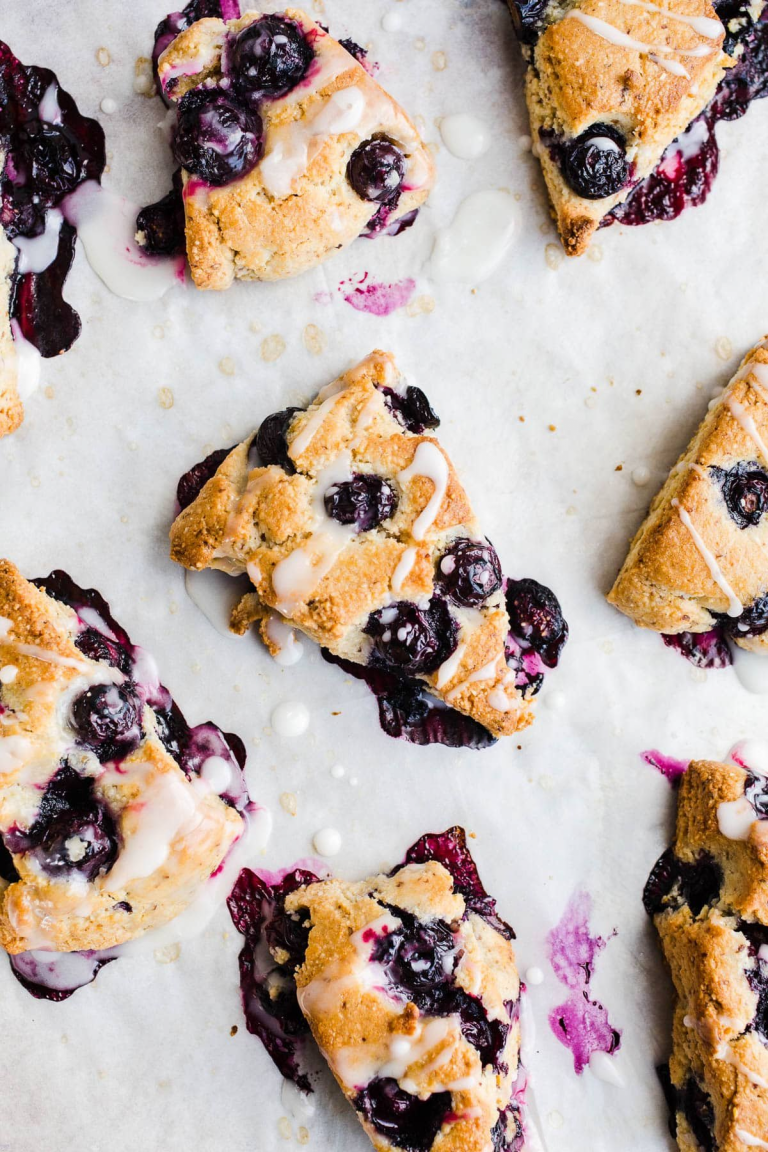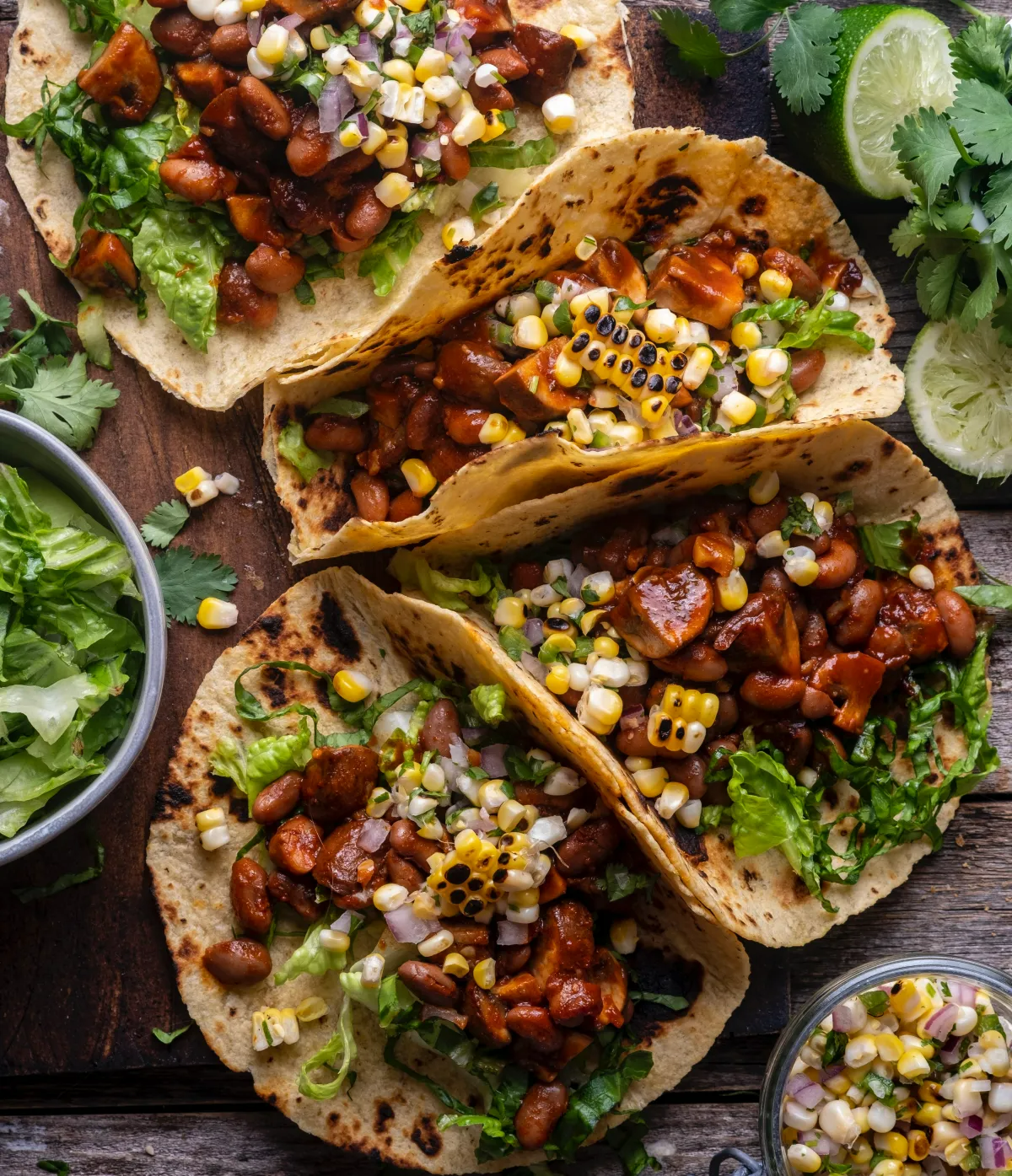
Fantastic Vegan Recipes for Teen Cooks
Many teenagers these days are vegan, and that’s good for animals and the planet, and long-term health. But due to media bias (most newspapers don’t like vegans!) it’s really important that youngsters who choose this lifestyle, are confident on how to get enough calcium and iron, which can be low if not eating properly.
You for sure don’t just want to join your friends at McDonalds and live on plant-based versions! And on a serious note, some chains (like Burger King and KFC) fry their vegan food in animal fat anyway, which rather defeats the point.
At the same time, peer pressure (and it’s normal to want to be ‘one of the crowd’) means you want to still fit in and enjoy great food like hot dogs and veggie burgers, without being the ‘odd one out’ living on lentil salad (which would not be good to live on anyway, you need balanced foods).
Before cooking, read up on food safety for people and pets. It’s best to just bin allium scraps (onion, leeks, garlic, shallots, chives) along with rhubarb, tomato and citrus scraps, as acids may harm compost creatures.
Instead of the media focusing on the odd tragic story of vegan anorexic teenagers who sometimes starve themselves to detail, why not celebrate that the next generation are so in tune with helping to stop animal cruelty, and climate change?
Eating Tips: British Nutrition Foundation
British Nutrition Foundation advises the following eating habits for teenagers. Although ‘almost adults’, most are still growing in height, with their bones also still developing, which means plant-based calcium is key for stronger bones, later in life.
- Eat a Healthy Breakfast: This could be a bowl of porridge, or wholegrain toast with nut butter, or a healthy cooked vegan breakfast.
- Eat Three Meals Daily: Don’t follow supermodels, ensure you have three good smallish meals each day, to balance blood sugar and keep you healthy and strong.
- Boost Your Iron Intake: Almost half of teenage girls are not getting enough iron. You can easily remedy this with iron-rich dark green leafy veggies, pulses (peas, beans, lentils) and seeds.
- Build Up Your Bones: Again you can enjoy plant-rich calcium foods like plantmilks, pulses again (beans, peas, lentils) and wholegrains.
- Drink Plenty of Fluids: Filtered water is best, be careful with energy drinks, most have too much caffeine in them. Stick to natural water and sodas.
- Avoid alcohol. It’s illegal to buy alcohol anyway before 18. So start good habits, and stick to water.
- Eat limited fast food. Only have even a vegan burger as a treat, get used to regular wholesome home-cooked meals.
- Enjoy healthy Snacks: Go for wholegrain pitta with hummus and fresh fruits, over processed snacks.
Balanced Foods for Vegan Teens
Teenagers are still growing, so it’s vitally important they get enough:
- Protein for muscle growth and hormone production
- Calcium to build strong bones
- Zinc (for boys especially, for fertility)
- Carbs (for energy and focus)
- Potassium (for healthy heart and kidneys)
- Vitamin A (for healthy vision)
- Iodine (for growth and metabolism)
A mix of healthy fresh foods and complex carbs with plant-based protein is best:
- Fresh organic fruits and veggies (vitamin C)
- Brown rice & pasta, wholegrain bread (B vitamins and carbs)
- Nuts, seeds and butters (not for young children)
- Carrots and watercress (vitamin A)
- Broccoli and bananas (potassium)
- Spinach and almonds (calcium)
- Fortified plant milks & seaweed (iodine)
- Pumpkin seeds or vegan Quorn (zinc)
- Wheatgerm or Brazil nuts (selenium)
- Oats or cashews (phosphorus)
- Blackberries or cocoa (chocolate!) for magnesium
- Pulses (beans, peas, lentils) for iron
- Fortified cereals & safe sun exposure (wash off sun creams before letting pets kiss you, due to zinc oxide)
Get Enough Plant-Based Iron
Teenage girls especially (due to menstruation) must ensure they get enough iron. This is perfectly possible to do on plant-based foods (and you’ll absorb this important nutrient better if you eat alongside vitamin-c rich foods, like organic fruits and vegetables. Also don’t smoke, as this makes your body lose iron.
Symptoms of low iron include fatigue and low mood, and if not checked, can lead to serious iron deficiency anaemia (vitamin B12 is also very important, so either take a supplement or eat fortified foods).

Dr. Vegan Kids Pro-Multi is a fab supplement formulated by expert nutrition, for children age 3 to 16. Sold in a metal tin, with compostable refills. It contains 25 active ingredients (no additives) and 2 strains of live friendly bacteria (you can open the capsules and sprinkle on food, if preferred).
Older teenagers (16 to 18) can take one capsule of the two-a-day multi-vitamin (then go up to 2 capsules on reaching 18). Always check with your GP if taking other supplements or on medication.
- Within 1 week, you should notice improved energy and mood.
- Within 2 weeks, you should notice better focus.
- Within 3 weeks, you should notice better immunity (fewer sniffles!)
- Within 4 weeks, you should notice better digestion
Why Teens Choose a Plant‑Based Diet
Lots of teens are turning to plant-based eating for reasons that matter to them. For some, it’s about feeling better every day. Others want to help the planet or join in with friends and trends that spark on social media. Here’s a closer look at the main reasons behind their choice.
Health Benefits
Eating more plants can make a noticeable difference in how teens feel and look. It’s not just hype—the small changes often show up fast.
- Improved energy
Many teens say they feel less sluggish after going plant-based. A study from Oxford University found that people eating more fruits and veg felt more alert and less tired during the school day. - Clearer skin
Eating less dairy and processed food can help with spots. In simple terms, more fibre and less greasy food can lead to fewer breakouts. The British Skin Foundation reports that teens who eat a varied plant-based diet often see their skin calm down within weeks. - Lower risk of heart disease
Eating plant-based foods means a drop in LDL (‘bad’) cholesterol. For teens, this means long-term heart health. People who eat mostly plants tend to have up to 32% lower risk of heart disease later in life, according to NHS-backed research.
Environmental Concerns
Teens care about what’s happening to the planet. Eating plant-based meals is a direct way to take action, and many notice the difference on a practical level.
- Growing plants for food uses less land, energy, and water than farming animals.
- Swapping just one burger a week for a bean or veggie version can save about 1,500 litres of water—the same as 20 showers.
- Schools sometimes run projects tracking lunches and showing that packed plant-based meals can shrink a student’s carbon footprint by nearly half.
Teens join eco groups, plan plant-based lunches with mates, or choose veggie options at canteens to reduce greenhouse gas emissions. They link what’s on their plate to big issues like climate protests and eco clubs. It’s an everyday bit of activism that, over time, adds up.
Social Influence
What your friends do, what pops up on your TikTok or Instagram feed, and what your favourite celebrity eats all shapes what feels normal. Right now, plant-based eating has a moment—and teens want to be part of it.
It’s not just about copying. Eating plant-based can feel like joining a movement. There’s a community angle—trying new foods, sharing tips, and getting support from people with similar values. Going plant-based is now part of everyday teen culture.
Simple Meal Plans for Busy Teens
Sticking to plant-based meals isn’t always easy when you’re racing between lessons, revision, and after-school plans. A smart meal plan helps. There are loads of quick, colourful choices that taste great and keep you feeling full until dinner.
These ideas slot easily into a busy school schedule and don’t leave you bored with the same old snacks.
Quick Breakfast Ideas

Every morning feels a bit rushed, so breakfast needs to be quick but filling. Here are three tasty choices you can prep in advance or whip up in minutes:
- Smoothie bowls: Blend frozen berries, banana, and a splash of oat milk until thick. Pour into a bowl and add toppings like sliced banana. It’s bright, sweet, and you eat it with a spoon, so it feels a bit like having dessert for breakfast.
- Overnight oats with fruit: Mix rolled oats, plant milk, and your favourite chopped fruit (apple, blueberries, mango) in a jar and leave it in the fridge overnight. By morning, it’s soft and ready to eat. Sprinkle on some seeds or a little nut butter for a protein boost.
- Whole-grain toast with smashed peas and hummus: Smash some peas on toast, spread over hummus, and top with sliced cherry tomatoes or cucumber. It’s creamy, crunchy, and keeps you full for hours.
Try one, or swap between them during the week—none take longer than ten minutes in the morning. These breakfasts work even if you’re half asleep and out the door in a hurry.
Lunchbox Options
Lunch is all about something that travels well, doesn’t taste bland, and gives steady energy for the afternoon. These ideas fit into a classic lunchbox and don’t get soggy or boring:
- Wraps with falafel: Fill a wholemeal wrap with ready-made or homemade falafel, shredded lettuce, grated carrot, and a dollop of tahini or hummus. Roll it tight and slice in half. It won’t fall apart and gives a good hit of protein.
- Quinoa salad: Mix cooked quinoa, cherry tomatoes, diced cucumber, chickpeas, and a splash of olive oil. Add any fresh herbs if you have them. This salad tastes fine cold and won’t wilt in your bag.
- Bean burrito: Use a tortilla and fill it with black beans, salsa, corn, and diced peppers. Fold and pack it tightly in foil or a reusable box. You can eat this hot or cold.
Lunch can feel endless at school, but these ideas are quick to put together and taste different every day. You can also prep several portions of the salads or make a batch of wraps and switch up fillings.
Easy Dinner Recipes
After a long day, no one wants a complicated dinner. These plant-based dinners are simple, hearty, and take little effort.
- Stir-fry tofu with veg: Cut tofu into cubes and fry until golden. Add mixed vegetables like broccoli, peppers, and mange tout. Pour over some soy sauce or teriyaki for flavour. Serve with quick-cook rice or noodles. This meal is fast, colourful, and covers your veggie quota.
- One-pot pasta with lentils: Throw dried pasta, tinned tomatoes, tinned lentils, garlic, and a handful of spinach into one pan. Let it simmer until the pasta is cooked and the sauce is thick. Top with nutritional yeast or a sprinkle of seeds for a cheesy finish.
- Baked sweet potato topped with black beans: Bake sweet potatoes until soft. Split open and fill with black beans, a few spoonfuls of salsa, and some tinned peas. Add chilli flakes if you like it spicy.
These dinners use what you find in most shops. Nothing fancy or expensive. You can double up and have leftovers for packed lunches or lazy evenings later in the week.
Plant-based eating doesn’t need to slow you down. By picking a few favourite recipes, you’ll always have something ready for the day ahead. Meals like these suit busy lives and keep eating plant-based both fun and practical.
Media Tips to Spot Bias
With lots of plant-based info out there, it’s easy to hit bumps along the way. Some headlines seem dramatic or one-sided, and not every source gives balanced, science-based advice. Here’s how to keep your facts solid and spot bias, especially around nutrition.
- Check where info comes from: Reliable advice usually comes from NHS websites, registered dietitians, or known charities. If it sounds too good to be true, look for a second source.
- Look at the headline: Watch out for sensational phrases like “Going vegan made my hair fall out overnight!” or “Plant-based teens at risk of illness.” These often twist the facts and aim to shock for clicks.
- Balance your sources: If you see a claim about a food or supplement, check what other expert sites or actual scientific studies say. Bias creeps in if a single source has something to sell, like a diet plan or pills.
If you’re ever in doubt, ask a trusted adult, teacher, or reach out to one of the supportive vegan groups above for the real story. With the right info and community behind you, plant-based living stays positive and stress-free.
Type in ‘vegan news’ in google and you’ll see alarming, factually incorrect and sensational articles aiming to deflate the powerful growth of the vegan movement. Some of the reasons include agricultural bias (media outlets tie to vested interests), politics (‘traditional values’ do not accept the horrible reality of factory farming) and more politics (dividing people due to different values).
What can we do? Inform people on the benefits of plant-based food on our health, the planet and animal welfare. Calling out persistent untruths, and simply living our lives happily and healthily, showing that we are not all dying of protein deficiency. Mario Iacovou
Recipe Books for Plant-Based Teenagers

My Vegan Year is a nice book that focuses on seasonal food and recipes, plus information for young people on the benefits of going plant-based.

The Little Book of Vegan Student Food is not just for students, but for anyone on a budget, and those of us who prefer simple affordable recipes over big coffee-table books of recipes that often are too complicated or time-consuming or expensive to make.
You won’t find pictures of authors in their luxury kitchens in this book, just simple recipes made with simple ingredients (beans!) that you could start making this evening.
If you’ve cooked a meal, store leftovers in the fridge for up to 2 days, or in the freezer for 3 months (write the date it was cooked on the lid). Defrost everything thoroughly overnight in the fridge, and don’t refreeze or reheat more than once.
This pocket-size guide is handy to take with you to university or on holiday and is packed with nutritionally-sound plant-based meal that are tasty and easy-to-make. Spice up your student suppers with recipes easy enough to make on a hot-plate.
For example, the recipe for nachos just needs a can of beans and tortilla wraps, a tomato and onion, olive oil, a little vegan yoghurt and grated ‘cheese’, along with paprika, salt and pepper.
And a squeeze of lemon. The recipe is simple to fit on one page. And once made, this can become a ‘staple’ for Mexican night in your student digs!
Learning to cook your own healthy affordable and sustainable food is one of the most empowering things you can do.
So even if you have to shop at a budget supermarket due to lack of proper local farm shops, you can just buy basics (vegetables, beans, nuts, fruits) to make meals on a budget, and not give profits to the cheap ready-made meal industry.
Mid-Week Mac is a one-pot meal. While pasta cooks, make a roux with plant-based butter (Flora is free from palm oil), mustard and the dry ingredients (onion and garlic powder and cheesy-tasting nutritional yeast. Add flour to make a thick sauce, cook and add tomatoes and sweetcorn.
Simple Soup makes a nice garlic onion stock in broth, then just add a baked peeled pumpkin, cool and freeze into portions, then season with salt and pepper to taste.
Around half of all students are now plant-based, and the good news is that on campus, you don’t need much equipment. The must-haves include:
- A set of affordable quality knives (and chopping board)
- A saucepan and frying pan
- A wooden spoon, mixing bowl and baking tray
- A set of cup and spoon measures
- A measuring jug (a 3/4 full standard mug is 250ml)
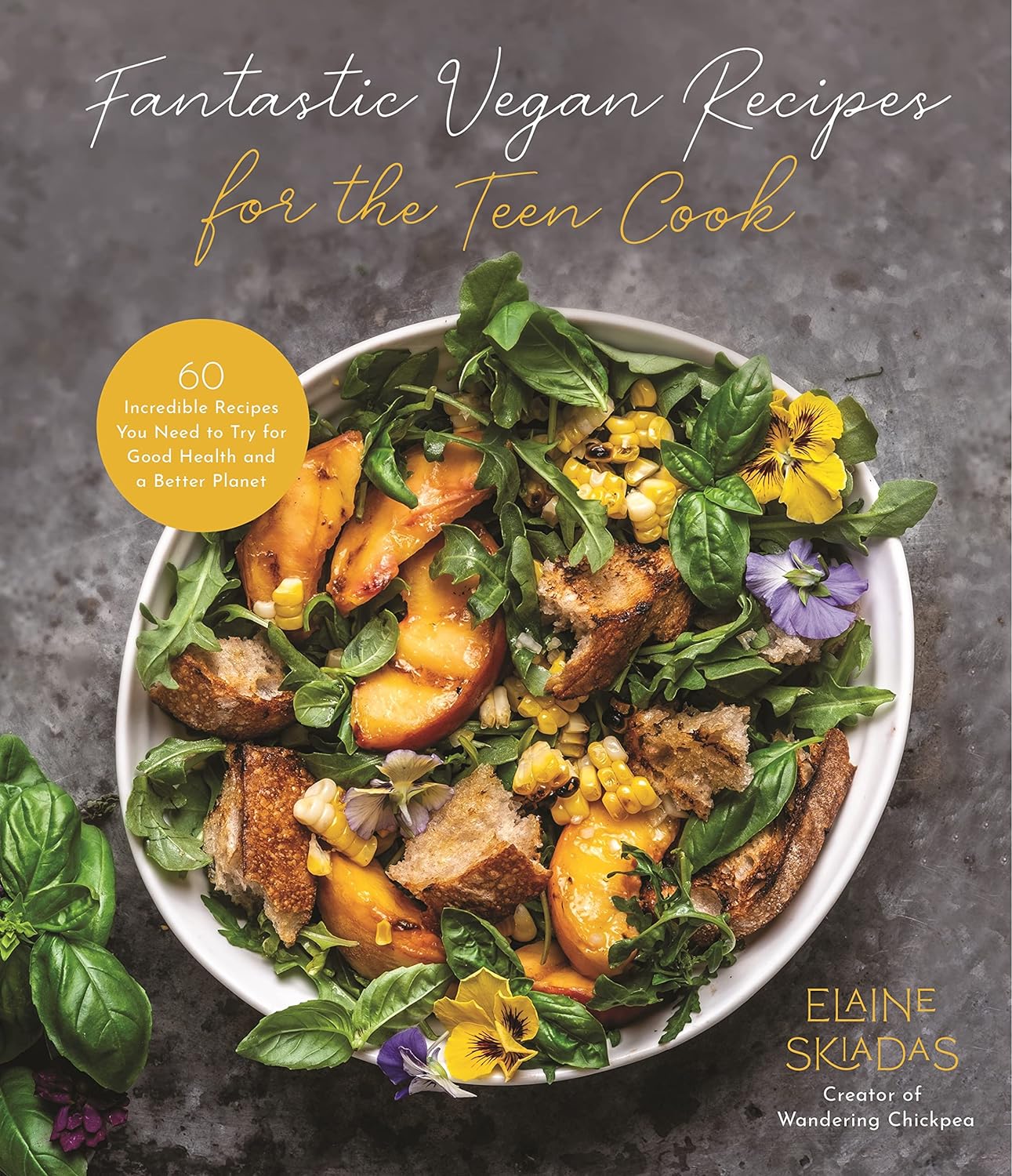
Fantastic Vegan Recipes for Teen Cooks is a fresh friendly voice, with easy instructions to create showstopping dishes for the environmentally-conscious young chef. No need for bland or boring!
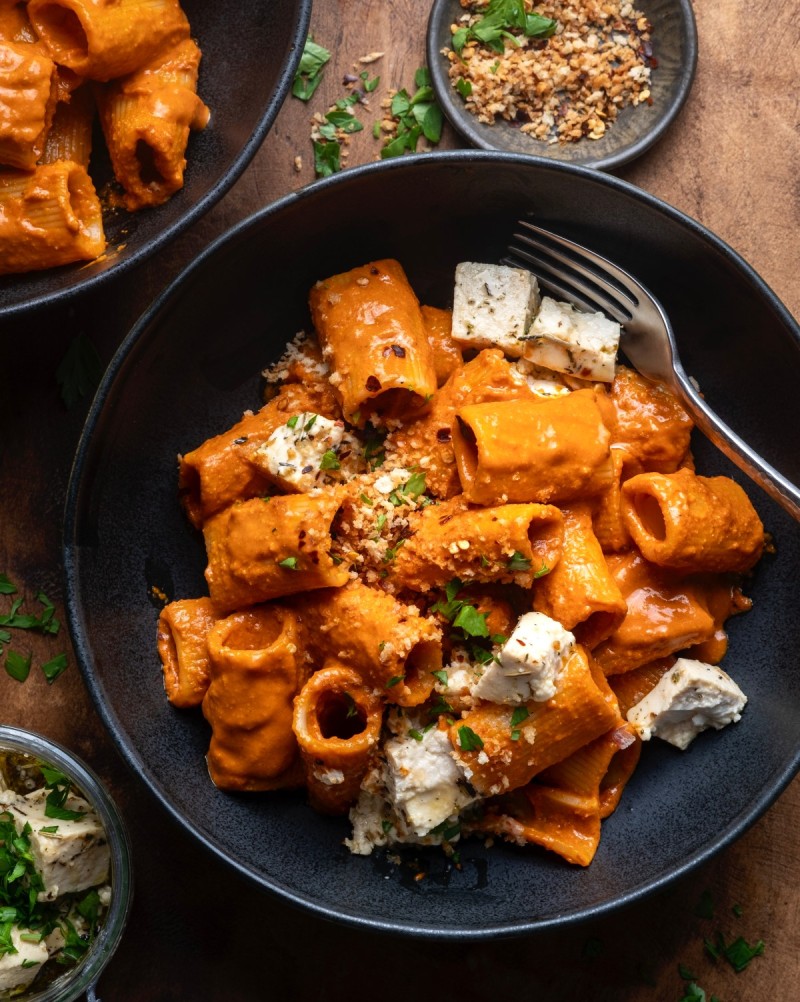
Recipes include:
- Sheet pan gnocchi alla norma
- Courgette bread pancakes
- Spinach artichoke quesadillas
- Roasted red pepper pasta
- Indian butter tofu
- Butternut mac & cheese
Elaine Skiadas is a food photographer and recipe developer, who studies communication at a Californian university and loves drawing, painting and running. She loves good food but has an allergy to nuts, eggs and dairy, so has used her creative skills to formulate suitable recipes taste great.
Rather than see her allergies as a disadvantage, she loves to be forced to think outside the box to help people eat tasty food, with or without restrictive eating rules.

Vegan Cookbook for Teens does not have the most inspiring cover photo, but it’s packed with tasty simple recipes. The 100 recipes build skills to last a lifetime, and are nutrient-dense. One chapter covers ‘meals for one’, making this a good book also for people who live or cook alone. Recipes include:
- Oven-Roasted Breakfast Potatoes
- Easy Burrito Bowls with Cauliflower Rice
- Thai-Style Peanut Chickpea Salad
- Sweet Potato Pancakes
- No-Cheese Quesadilla
- Easy Mac n Cheesy
- Flatbread Pizza
- Spaghetti Aglio e Olio

Living Lively is a fun book by a young woman (now 24 but a teen when the book was written) who is a well-known ‘compassion activist’ in the States. This is because she helped through her recipes, to reverse her beloved dad’s type-2 diabetes.
This book (by the youngest Certified Integrated Health Coach in North America) combines 75 wholesome recipes with a ‘7 points of power’ manifesto, to inspire you to take care of your health.
Recipes include:
- Golden Dream Turmeric Berry Pudding
- Fruity Jamaican Cornmeal Porridge
- Potachos (potato nachos) with Green Chile ‘Cheese’ Sauce
- Straight Fire Mac ‘n’ Cheese
- Shortcut Sweet Potato Pie Boats
A Charity That Helps Young Vegans
The Vegetarian Charity is a small charity that gives grants to vegans and vegetarians under 26, who need help. You need to provide proof from two people, via signed reference requests. Typical grants are for educational courses, special needs, and daily living (fridges, bedding, sewing machines etc).
Conclusion
Plant-based eating works for teenagers. With simple meal ideas and a bit of planning, you can get all the nutrients you need each day and still enjoy your favourite foods. There’s support from friends, online groups, and helpful charities, so you never have to feel alone in your choices.
If you’re curious, try a new plant-based meal this week or reach out to a youth group for tips. Every small step helps—for your own health and for the planet too.

